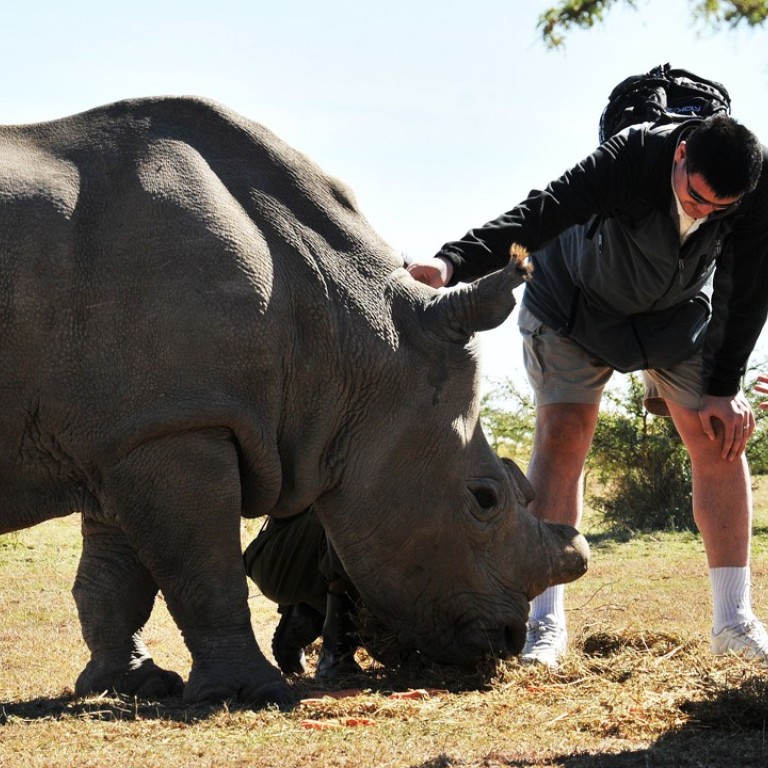
China’s tug of war over tiger and rhino protection: did Trump’s trade war influence Beijing’s original decision?
- Peter J. Li says Sino-US tensions made it easier for China to act on behalf of the country’s wildlife businesses, easing the ban on rhino and tiger products
- However, international outrage might have convinced the authorities that they had conceded too much to the wildlife industry, prompting a rethink
It is hard to know at this point what went into the latest postponement decision. The clash inside China over the use of rhino and tiger parts is no secret to the global conservation and animal protection community. The October 29 circular was the result of years of active lobbying by the country’s wildlife business industry.
The terrestrial wildlife farming part of the industry amounted to 55 billion yuan (US$7.92 billion) in 2016, a tiny part of China’s US$11.19 trillion gross domestic product. However, wildlife farming has an impressive presence in the country’s less developed regions where poverty reduction remains a strategic objective for local governments.
China has scores of facilities that breed tigers. Two major tiger farms that house more than 3,000 animals have managed to stay open despite the 1993 ban. Both farms breed some 200 cubs a year with the expectation that the ban will eventually be lifted. As a result of poor conditions on the farms, many tigers die and their carcasses are often frozen for future use. Both farms are engaged in making “tiger wine” using parts from dead tigers.
Watch: China postpones easing ban on tiger and rhino parts
The financial difficulty of tiger farming has not deterred others from entering the rhino farming business. In November 2005, China declared traditional Chinese medicine (TCM) production a strategic industry to be protected by the state. That year, an arms manufacturer began rhino farming and the first group of African rhinos arrived at its “research centre” on Hainan Island. The plan was to shave the horns of farmed rhinos for medicinal use.
As in the case of the two tiger farms, the new rhino farming proposal received government endorsement. The State Forestry Bureau, China’s national agency for wildlife conservation, supported the farming operation, with a group of wildlife experts endorsing the rhino horn shaving technology. The People’s Daily called the shaving technology “a breakthrough” in TCM production and a contribution to human health.
The October 29 circular on legalising the tiger and rhino trade is supported by the revised Wildlife Protection Law of 2016. The law was a victory for the country’s wildlife business interests. Article 25 of the law advanced the concept of “captive-bred offspring”, which are to be treated differently from animals in the wild.
Article 29 allows for the use of “captive-bred offspring” of wild animals for medicinal purposes. For years, the owners of the two tiger farms have claimed that their tigers are no longer wild animals but “captive-bred offspring” of tigers which were also captive-bred.
Watch: Siberian tiger dies after fighting Bengal tiger in Kunming
What could explain the November 12 announcement delaying the lifting of the ban on rhino and tiger trade? There are three possible scenarios. First, the Chinese authorities may have failed to reach a consensus on the implementation regulations. The postponement was therefore needed for the parties to agree on the regulations acceptable to all.
The parochial demands of the country’s wildlife business are not in China’s national interest
Whatever the reasons that underpin the November 12 announcement, China should have taken rhino and tiger protection more seriously. The parochial demands of the country’s wildlife business are not in China’s national interest. As a major destination of global tiger and rhino trafficking, China has the obligation to adopt a complete and permanent ban on the rhino and tiger trade.
Peter J. Li, Ph.D is associate professor of East Asian politics at the University of Houston-Downtown and a China policy specialist at Humane Society International

